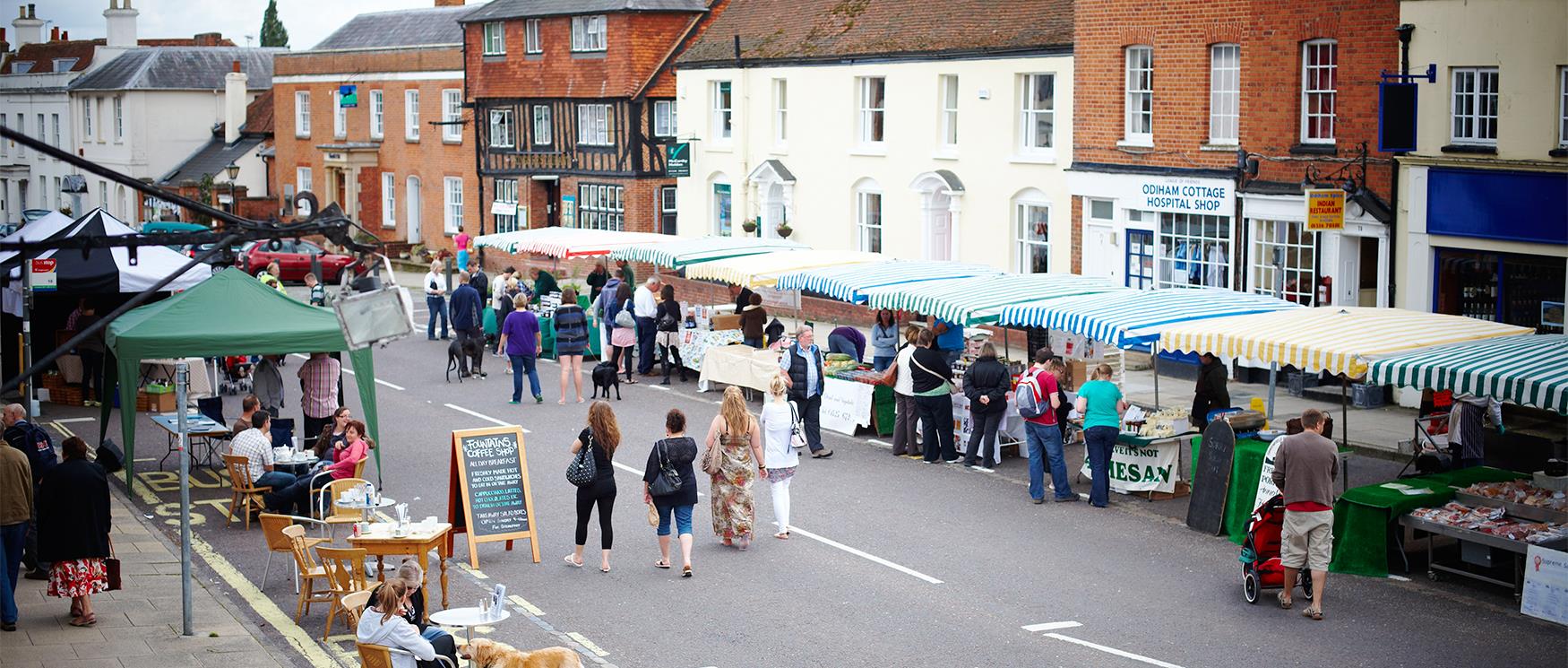
Odiham is a picturesque market town in North Hampshire, not far from Basingstoke. As a royal manor it was the first entry in the Hampshire Domesday book.
Odiham lies on the banks of the Basingstoke Canal and has a rich collection of historic buildings as well as lovely countryside and canal walks nearby. The Basingstoke Canal, built in the 1700s, flows between Hampshire and Surrey and eventually links with the Rivers Wey and Thames. 32 miles of the canal have been restored for the benefit of walkers, canoeists, anglers and naturalists and there’s also a towpath walk linking Odiham Castle to Odiham Common. It offers splendid views of meadows and historic buildings from its towpath.
Odiham was a frequent stopping point for Norman Kings and Odiham Castle was probably built by King John around 1200. A large deer park was created around Odiham for Royal hunting and this layout still dominates the shape of settlement today. It is criss-crossed by a network of footpaths where a walker can imagine medieval kings and queens enjoying hunting, hawking and recreation. King John left Odiham castle for Windsor on 10th June 1215 and met with baronial leaders at Runnymede that day, sealing Magna Carta there on 15th June. He returned to Odiham on 26th June and a translation of Magna Carta into vernacular French was attested here on the 27th.
Odiham became a market town in the Middle Ages and some medieval timber-framed houses still remain, such as Monk’s Cottage, dating from around 1300. Odiham now comprises 3 distinct settlements: Odiham with its impressive High Street, North Warnborough, more rural and linear in layout, and RAF Odiham whose helicopters are often to be seen in the sky.
Just off the High Street in the Bury, the striking 13th century church of All Saints sits on the site of an earlier Saxon church.
The fascinating Pest House and the Bridewell, a former house of correction where the Odiham Embroidery will hang in Odiham Library, are found nearby amongst a mixture of quaint and grand listed buildings. The historic High Street offers a good selection of shops and a diverse and extensive range of restaurants, coffee shops and public houses.
North Warnborough has few of the rural industries and shops of yesteryear, but retains its separate identity and character, and the countryside and nature are always evident to the traveller - whether driving through, following the canal, walking footpaths or cycling along its lanes.